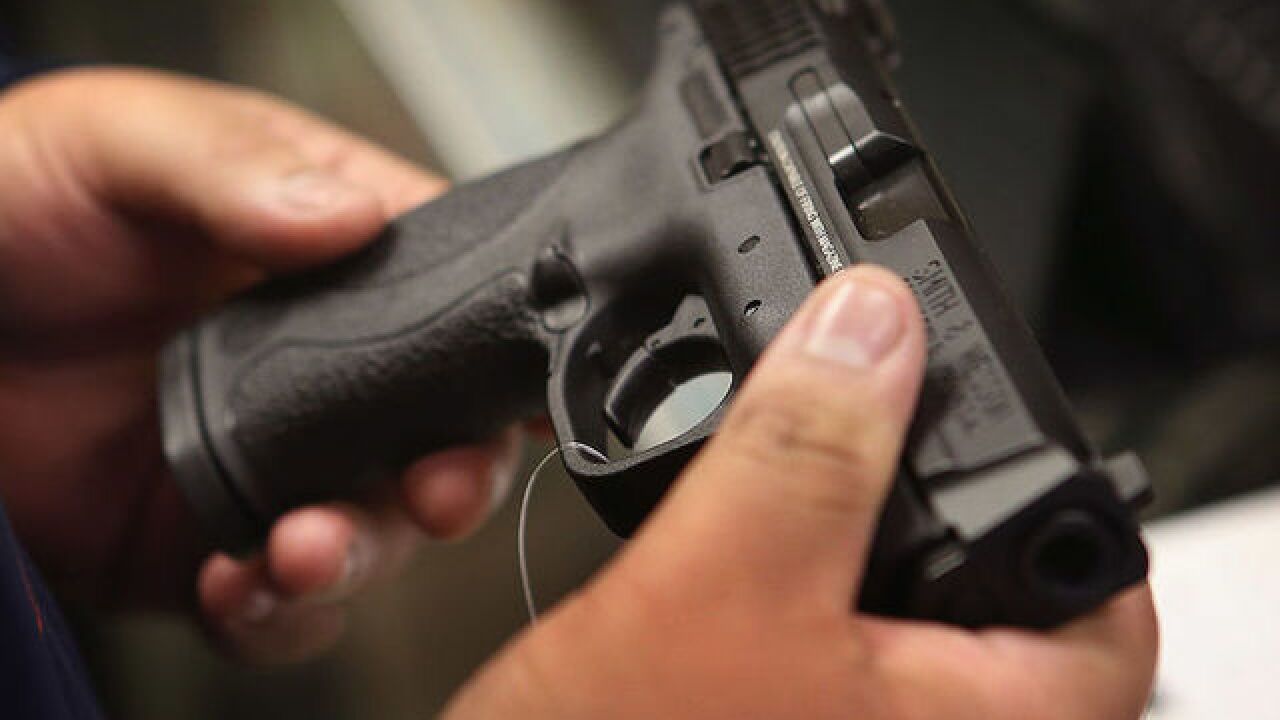The following articlewas originally published in the Ohio Capital Journal and published on News5Cleveland.com under a content-sharing agreement.
An Ohio House committee passed legislation Thursday that would allow most Ohioans who are 21 years of age and up to lawfully carry a concealed firearm.
Current law allows Ohioans to carry concealed weapons after completing eight hours of training and submitting an application to their county sheriff, who conducts a background check. House Bill 227, if passed, would remove the training and application requirements for anyone who is of age and not prohibited from carrying a weapon by state or federal law.
Over each of the last six years, about 3,900 concealed carry permits on average were either suspended, revoked or denied, according to data from the Ohio Attorney General.
The legislation would also remove Ohioans’ duty under current law to notify police officers that they’re carrying a weapon if they’re stopped in traffic. HB 227 only requires them to notify officers about the weapon if they’re asked.
Passing “permitless carry,” as the legislation is commonly referred to, would forward a steady march of loosening Ohio’s gun laws. Ohio's concealed carry program launched in 2004 and required 12 hours of training at the time. In 2006, lawmakers passed a bill blocking cities from passing gun control laws stricter than those of the state at large. Republicans passed a "stand your ground" bill last year that removes the legal duty to first seek retreat from a confrontation before responding with deadly force.
The push toward permitless carry comes as gun violence hits record highs. In 2021 so far, 694 people have been killed and nearly 1,600 have been injured in shootings in Ohio, according to data from the Gun Violence Archive, which tracks media reports of shootings around the U.S.
The legislation passed without much fanfare from Ohio’s House Government Oversight Committee. House Majority Leader Bill Seitz, R-Green Twp., said he was convinced of the need to pass the legislation by gun lobbyists from the National Rifle Association and the Buckeye Firearms Association.
Rep. Tim Ginter, a Salem Republican who also works as an ordained minister, mentioned that the legislation clarifies that people can carry concealed weapons in a house of worship, as many of his parishioners do.
“If you attend the church that I pastor, just be aware that there’s probably a lot of people in there with handguns,” he said.
House Democrats on the committee opposed the legislation. They tried, without success, to amend two anti-gun violence provisions into the bill. One would require background checks to purchase firearms at gun shows and from private sellers. Another would allow judges, if petitioned by family or law enforcement, to temporarily seize weapons from people experiencing mental health crises.
Rep. Paula Hicks-Hudson, the ranking Democrat on the committee, called the legislation “short-sighted” and divisive.
“This extreme legislation doesn’t make Ohio any more gun friendly,” she said. “Instead, it makes it a lot less safe for all of us, including gun owners.”
The gun lobby has been pushing for permitless carry in Ohio for at least 10 to 15 years, according to Buckeye Firearms Association’s top lobbyist Rob Sexton. In an interview, he framed the issue around the constitutional right to bear arms and downplayed the existence of a relationship between loosened gun laws and gun violence.
“The law has been liberalized over the last 15 years toward the goal of fully realizing what the Constitution says, and we still haven’t seen the corresponding bad behavior by regular, law abiding gun owners,” he said. “So no, I don’t believe this change will make that happen either.”
In Ohio, the state supreme court holds that the constitutional right to bear arms does not guarantee the right to carry a concealed weapon.
“There is no constitutional right to bear concealed weapons,” wrote Justice Paul Pfeifer in a 2003 majority opinion.
The U.S. Supreme Court is also set to hear oral arguments Nov. 3 on the constitutionality of a New York law restricting concealed carrying of weapons in the state.
Richelle O’Connor, an activist with Moms Demand Action, said the outcomes of the policy are simple: More people with guns they aren’t trained how to use equals more gun violence.
“If more guns made us safe, then we would be the safest country in the industrialized nation, and we are not,” she said.
After the hearing, Moms Demand Action issued a news release citing two studies linking permitless carry laws to increases in violent crime. A 2018 working paper for the National Bureau of Economic Research authored by researchers from Stanford and Columbia universities found states with permitless carry laws experience roughly 15% higher rates of violent crime 10 years after adoption than they otherwise would have. Other research published in the American Journal for Public Health found that permitless carry laws were associated with 11% increases in handgun homicide rates.
Twenty-one states allow inhabitants (residents only in North Dakota) to carry a concealed weapon without a permit, according to a count from the U.S Concealed Carry Association. This includes neighboring states of West Virginia and Kentucky.
Permitless carry bills are advancing in other conservative-controlled statehouses around the U.S. including Wisconsin and Alabama and recently passed in Tennessee and Texas.
Download the News 5 Cleveland app now for more stories from us, plus alerts on major news, the latest weather forecast, traffic information and much more. Download now on your Apple device here, and your Android device here.
You can also catch News 5 Cleveland on Roku, Apple TV, Amazon Fire TV, YouTube TV, DIRECTV NOW, Hulu Live and more. We're also on Amazon Alexa devices. Learn more about our streaming options here.


